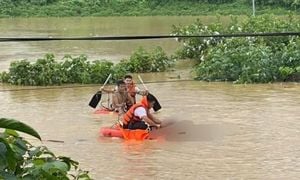Researchers are shedding new light on the enigmatic large low velocity provinces (LLVPs) located beneath the Pacific Ocean and Africa. These extensive geological features, characterized by their anomalously low seismic wave speeds, have sparked interest due to their complex thermal and compositional dynamics. A recent study dives deep, leveraging advanced simulations to unravel the differences between these two LLVPs, primarily shaped by Earth’s subduction history.
According to the findings, which span analyses over the past one billion years, the Pacific LLVP contains 53% more recently subducted oceanic crust materials than its African counterpart. This substantial difference suggests varying degrees of density and buoyancy between the two provinces, which play pivotal roles in influencing Earth’s mantle dynamics and seismic behavior.
While both LLVPs exhibit similar elevated temperatures leading to comparable seismic signals, their evolution diverges dramatically. The research team employed three-dimensional mantle circulation simulations to model how these features developed through geological time, highlighting the continuous replenishment of young subducted oceanic crust within the Pacific LLVP due to persistent circum-Pacific subduction.
Melting age distributions reveal another layer of differentiation — the material within the African LLVP tends to be older and more homogenized compared to the relatively youthful inputs found within the Pacific LLVP. The distinctively younger composition of the Pacific region suggests dynamic geological processes at play over the last 300 million years.
Researchers assert, "Melting ages indicate the material in the African LLVP is older and well mixed than the Pacific LLVP, which has been replenished by subducted oceanic crust during the past 300 Myr.” This fundamental difference hints at varying geological histories and the influence of tectonic activity, emphasizing the need for continuous studies exploring the impacts of these ancient oceanic crust reservoirs.
The findings not only provide valuable insights about the LLVPs but also open doors to broader discussions about mantle dynamics. The contrasting properties elucidated through this research could inform scientists about the past behavior of Earth’s tectonic processes and help draw connections to present-day geological activity.
Overall, this study enhances our comprehension of how LLVPs, formed through the interplay of temperature, composition, and historical subduction patterns, contribute to our dynamic planet's structure and behavior. This rich area of research remains prime for exploration, pointing to future investigations centered around the origins and influences of these fascinating geological formations.



